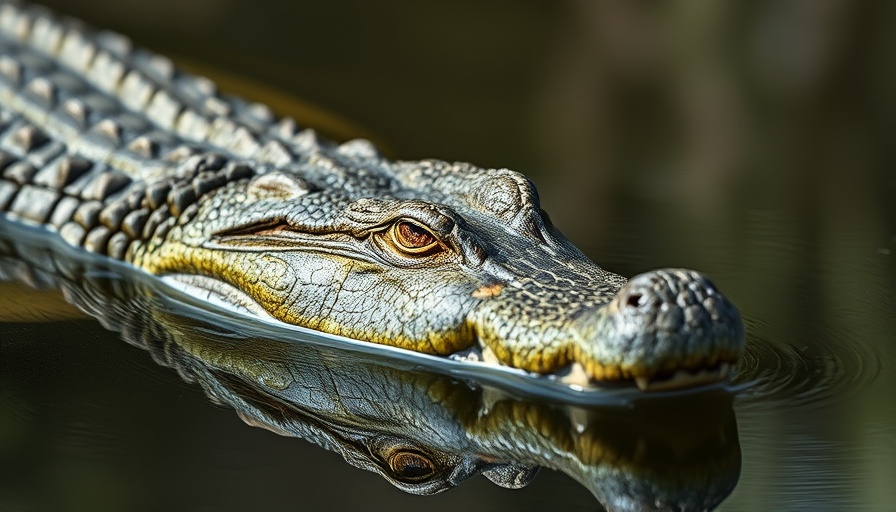
Heart-Stopping Alligator Encounter: A Miracle in Lake Waccamaw
In a shocking incident that rattled the community of North Carolina, a 12-year-old girl was seriously injured in a rare alligator attack while playing in Lake Waccamaw. This unexpected encounter underscores the vital need for awareness and education around human-wildlife interactions, especially as urban areas expand into natural habitats.
The Incident: What Happened?
According to police reports, children were splashing around in the waters of Lake Waccamaw when one of them suddenly screamed, "Something bit me!" The water was initially reported to be four feet deep, making the surprise appearance of the alligator particularly alarming. Lake Waccamaw Police Chief Scott Hyatt described the alligator’s initial estimated length as six to seven feet, but it was later confirmed to be a massive 12-foot creature.
The girl sustained serious injuries requiring stitches but is recovering well. Chief Hyatt remarked that thankfully, her injuries were not life-threatening. This incident marks the first known alligator attack in the history of Lake Waccamaw, which has a population of around 570 alligators.
Understanding Alligator Behavior: Why Was This Attack Significant?
Alicia Wassmer, an alligator biologist with the North Carolina Wildlife Resources Commission (NCWRC), elaborates on the unusual nature of this attack. She emphasized that alligator aggression often stems from human behaviors, particularly feeding, which causes these creatures to associate humans with food. This unfortunate interaction occurs as more people encroach upon natural habitats, leading to increased animal encounters and the risk of dangerous situations.
The alarming decline in wildlife populations—73% over the past 50 years due to human actions—also contributes to these conflicts, as animals lose their natural fear of humans. As awareness grows, the priority must shift toward protecting wildlife at all costs.
Guidelines for Coexisting with Alligators: Stay Safe!
In response to the attack, authorities are emphasizing the importance of education on human-wildlife coexistence. It is illegal to feed alligators in most states, and the NCWRC advises the public to respect wildlife and keep a safe distance at all times. If spotted, individuals should exit the water immediately and never approach these powerful creatures.
The police department has reiterated the need for community awareness, stating, "Please respect the water and understand these animals are not tame or pets." Such guidelines are crucial for ensuring both safety and biodiversity in the area.
A Call for Conservation: Protecting Natural Habitats
To minimize future confrontations, protective measures must be implemented. Conservation efforts, such as restoring natural habitats and proper waste management practices, play a fundamental role in reducing wildlife conflicts. Encouraging local communities to engage in conservation practices can foster a culture of coexistence, allowing both people and wildlife to thrive in harmony.
As we ponder the implications of this unsettling attack, let’s remember that every action counts. Together, we can strengthen our environment and protect our community while honoring the natural world around us.
 Add Row
Add Row  Add
Add 




Write A Comment